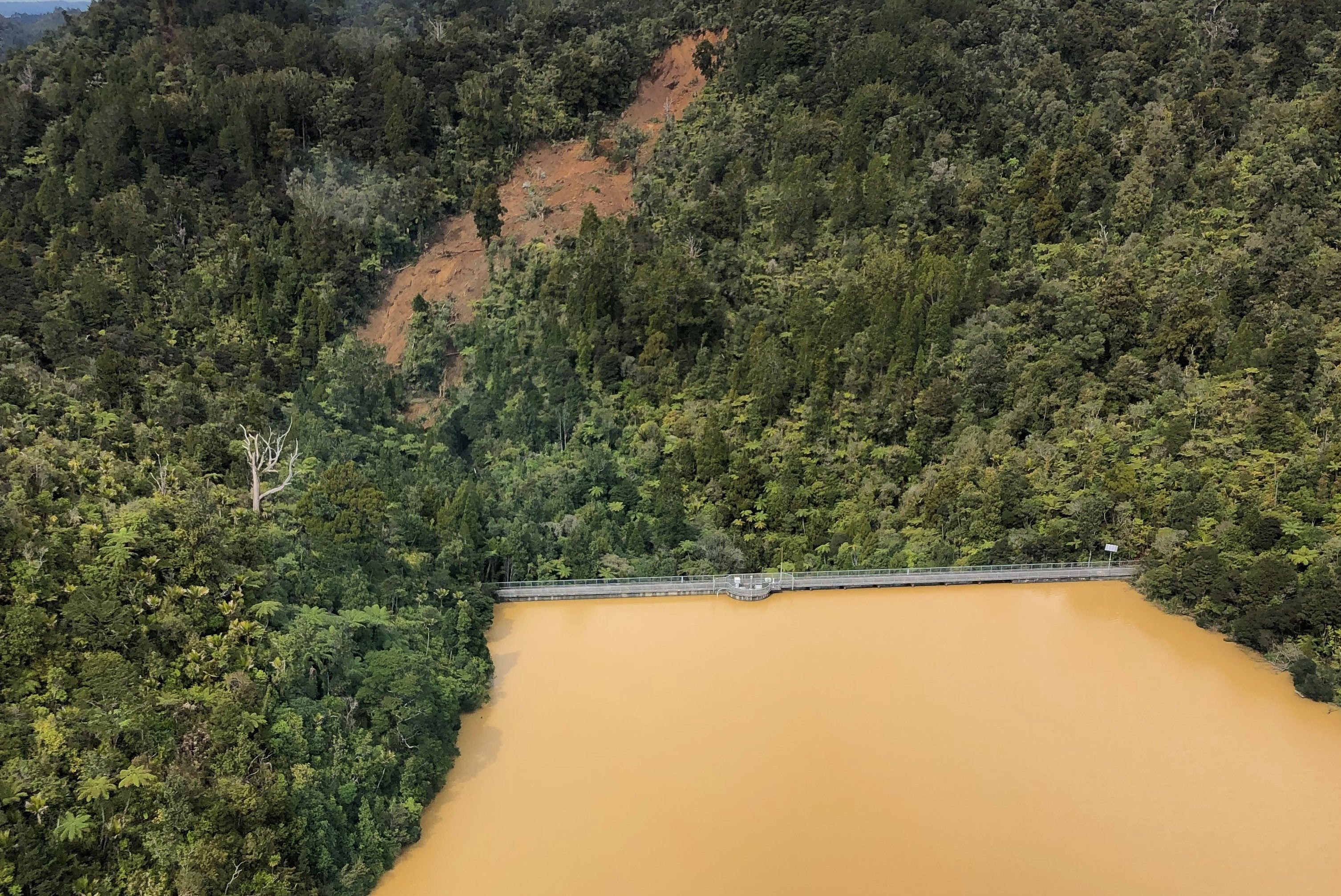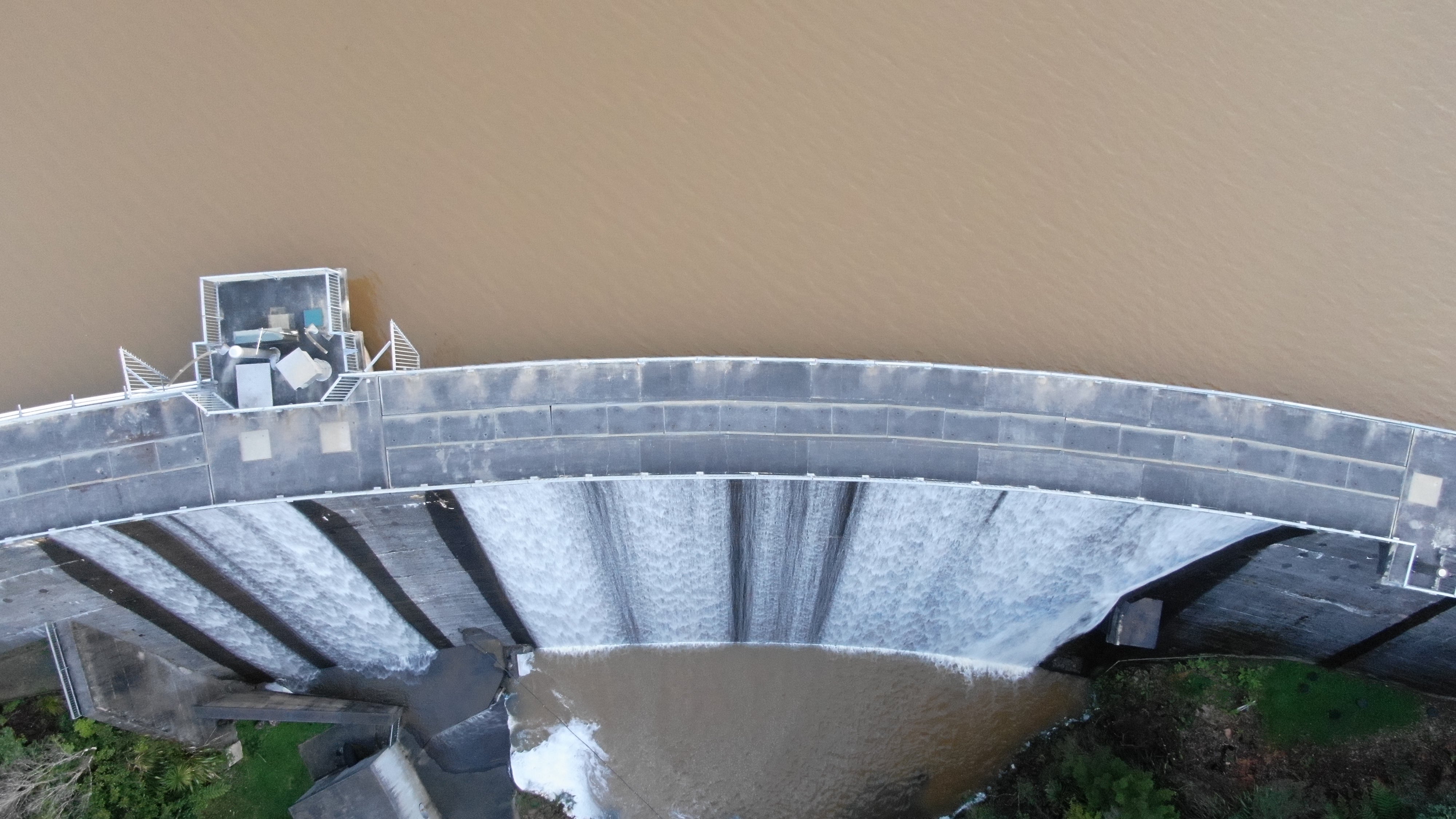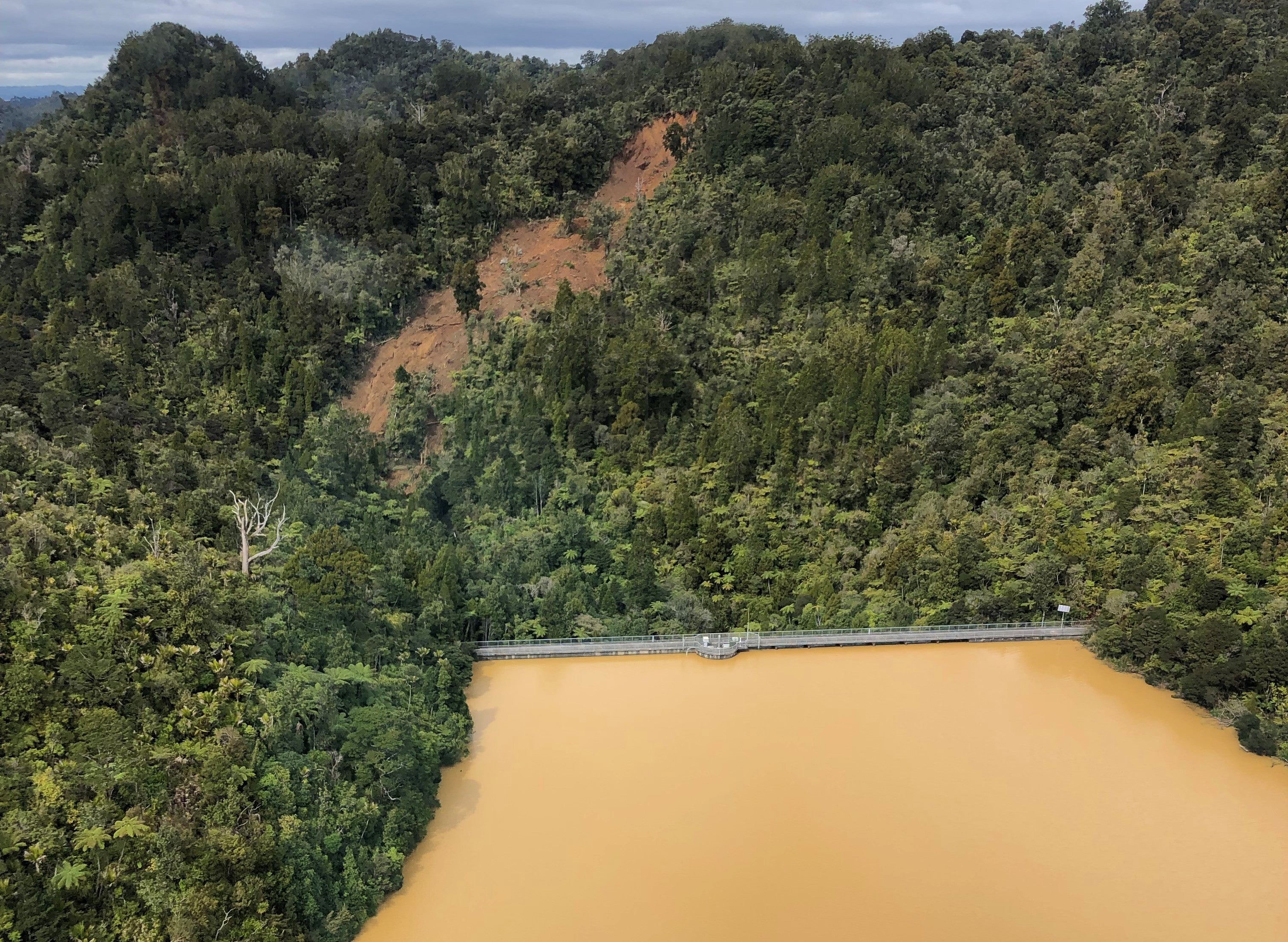
As the climate changes, extreme weather events like droughts and floods will rear their heads more and more often. In Auckland, we’ve experienced both ends of the spectrum over the past few years.
The impact of a drought on our ability to supply water to our customers is obvious – an ongoing lack of rainfall means the water stored in our dams drops, and the soil dries up, which means even when it does rain, much of it is absorbed by the ground.
But at the other extreme, a flood can also have a huge impact on our operations, beyond providing a boost to our dam storage level.
The torrential downpours that flooded homes and streets in parts of west Auckland in August 2021 arrived quite out of the blue. A rain ‘watch’ had been issued, but there was nothing to indicate the severe dousing that was to come.
Rain gauges at our higher western catchments, which feed into Upper Huia, Upper Nihotupu and Waitākere dams, recorded between 220mm and 270mm of rain in a 12-hour period. To give you a bit of context, these catchments normally receive between 150mm and 170mm of rain in the entire month of August.

Waitakere Dam looked murky and muddy after the torrential rain.
Our chief operations officer Mark Bourne says that amount of rainfall has a wide impact on both our water and wastewater operations. “When you’re dealing with a severe weather event, you get information coming in in bits. You don’t have the full picture straight away.
“When the August storm hit our online monitoring systems were alerting us to wastewater overflows at our pump stations across the network. This happens when stormwater enters the wastewater network and overloads the system.
“We also have manholes in our network that act as ‘engineered overflow points’. This is so that when the system does get inundated with stormwater, the diluted wastewater overflows at these locations instead of at a customer’s gully trap or inside someone’s home.
It wasn’t until we could get our crews out to each site that the extent of the impact could be gauged. One of our wastewater pump stations was almost fully submerged, and its operation had been compromised.
Meanwhile, online turbidity instruments measuring water clarity at our western dams had been setting off alerts in the middle of the night, with some turbidity readings going beyond the recordable range. “Our headworks team was up at 4am, manually making valve changes to select the best abstraction depth for water quality,” Bourne says.

Lower Nihotupu Dam is murky after the downpours.
“We knew from the turbidity instruments failing and the look of the raw water arriving at our Huia and Waitākere treatment plants that water quality had deteriorated, but it wasn’t until we could take samples at different depths of the water supply lakes that we could fully understand the impact – in some lakes, turbidity readings were more than 500 times what they’d been before the storm hit.”
As landslides had blocked access to our upper dams, we had to charter a helicopter so our staff could carry out an aerial survey of the storm damage.
“When we flew over the catchments, we could see a number of significant slips – some that had taken out mature trees and were sending clay-coloured water into our lakes. One slip appeared to have moved our raw watermain which supplies water from the Upper Huia Dam.”
Auckland’s resilient water network pays off
It’s times like these when the advantages of having a resilient water system – with a diverse range of source types and locations – are plain to see.
Even though the raw water quality in our western dams has deteriorated, we are still able to treat it at our Huia and Waitākere water treatment plants to produce top quality drinking water for our customers. “While the water coming into the plants is not as clear as it normally would be, our treatment processes mean there is no change to the quality of the treated water that leaves the plant. It is absolutely safe to drink,” Bourne says.
“Our plant staff are actively monitoring changes in raw water quality to ascertain if our treatment processes need to be adapted accordingly. But we have had to reduce production from the Huia Water Treatment Plant due to the deterioration of raw water quality. This plant was originally built in 1928 and is nearing the end of its operational life. When our proposed replacement treatment plant is built, it will be able to cope with changes in raw water quality more easily.”
Auckland’s range of water sources and increased treatment capacity at our Waikato River plants means we are able to continue running the Huia plant at low production levels while still meeting the city’s water needs.
The clean-up
While the storm itself lasted about 12 hours, its impact will likely be felt for several months.

A major slip on the banks of Upper Huia Dam.
In the days immediately after the deluge, our maintenance crews and contractors attended all wastewater overflow sites to carry out a thorough clean and disinfection. This work was all wrapped up within four days.
Experience from the 2017 Tasman Tempest weather event – that caused landslips in the Hunua Ranges and deposited tons of sediment into the southern water supply lakes – tells us it will be several months before the water quality in our Waitākere dams returns to normal.
Access to some of our dams is still blocked, and we have closed other access routes to protect public safety, due to the geotechnical risk.
Slip repair work in our catchments will be carried out in the next few weeks.
Here’s a few tips on what you can do to prepare for a flood:
Civil Defence recommends you keep supplies on hand in case of an emergency, including:
What to do during a flood: